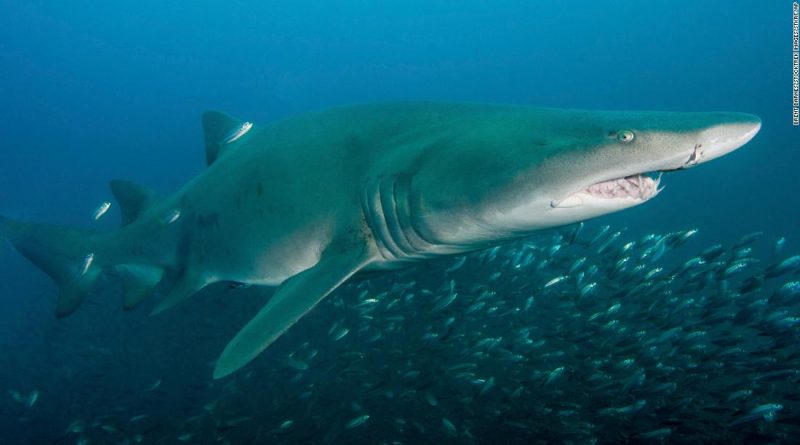The ocean phenomenon that’s bringing sharks closer to shore
Globally, shark attacks are at similar levels to previous years, said Naylor, who is also a curator of the Florida Museum of Natural History, but there are signs that the Northeast coast of the US might be seeing an uptick.
“We are right on trend for this time of year. I think globally, we usually get between 70 and 80 unprovoked bites by sharks around the world. But that’s a global phenomenon. And it’s distributed in a patchy way,” Naylor explained.
“One year we might have two or three bites in Hawaii in rapid succession. Next year, it could be New Caledonia; it could be in Western Australia. And this year, it’s off the coast of Long Island.”
Fish, not humans
The sharks that swimmers have encountered off Long Island were seeking out food, not targeting humans, Naylor explained. Most have been identified as sand tiger sharks, Naylor said, which, while fearsome looking, aren’t considered aggressive. They have likely been venturing into coastal waters to prey on abundant shoals of bait fish close to shore.
The shoals were particularly dense this year because of warm ocean currents peeling off from the Gulf Stream in the Atlantic Ocean and extending up the Northeast coast, he explained. These waters are richer in chlorophyll, allowing plankton to bloom, which also draws in bait fish.
“These bait fish are in schools of hundreds of thousands — or millions,” Naylor said, “and when they get quite close to shore, the sharks follow them.
“The sharks are swimming around trying to chase their dinner. The people are swimming around splashing with beach balls in their circle. … The surf zone gets quite murky because of all the energy and the sharks are all jingled up because they’re excited to see all this food — once in a while they make a mistake.”
Unlike adult sand tiger sharks, which are up to 9 feet (2.7 meters) long, the 4- to 5-foot-long (1.2- to 1.5-meter-long) juveniles may go closer to shore to chase fish.
“As you can imagine, (the) same with any mammals, juveniles aren’t as experienced. They don’t have as much pattern recognition skills as adults,” Naylor said. “We suspect strongly that it’s the juveniles and their judgment and discernment between what is somebody’s foot and what’s a flash of a bony fish’s scales.
“You’ve got a bunch of teenage sharks and they’re running around chasing fish.”
Great whites
Different dynamics have been at play off Cape Cod, where several great white sharks have been spotted this summer, prompting the closure of at least one beach. Naylor said there are no reports of shark bites, to his knowledge.
“Until now we didn’t know just how much time they spent in shallow water close to shore,” said lead author Megan Winton, a research scientist at the Atlantic White Shark Conservancy, in a news release last year. The North Chatham, Massachusetts-based nonprofit provides funding and resources for scientific research to improve public safety.
It’s the only place in the Atlantic Ocean where white sharks congregate. To date, around 300 white sharks have been identified and tagged by researchers, but there’s no official population estimate yet.
No matter what type of shark, Naylor said the measures to protect yourself are similar: Don’t swim or surf on your own, and don’t swim near big shoals of fish or if you spot seals nearby. Don’t wear jewelry in the water that a shark could confuse for the shimmer of fish scales. If you do spot a shark, back out of the water slowly. Don’t panic and splash around.




